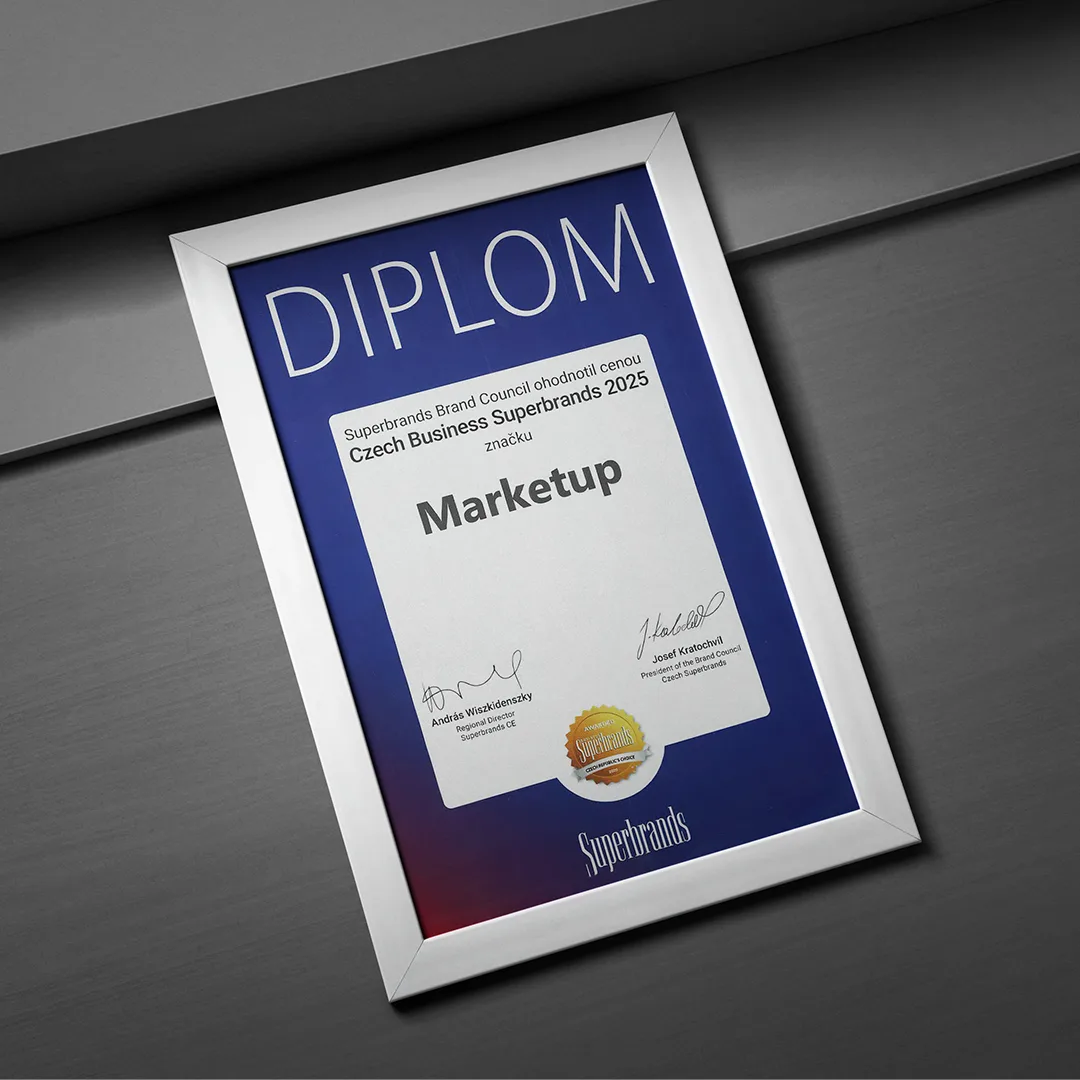Gabriela Martinčeková
23. 2. 2025
Read more


A successful brand is not just about a logo or advertising – it’s about a clear strategy, bold differentiation, and consistent work with emotions and data. At our Business Breakfast on the topic "A Brand That Resonates," we, together with marketing professionals from various industries, analyzed proven strategies that help brands grow and stand out. What were the key takeaways from the moderated discussions?
How to Differentiate and Create a Brand That Truly Sticks in Customers’ Minds? Led by: Martin Špaček (Marketup), Hanka Kloučková (Confess), and Štefan Sarvaš (Mars)
Courage to Differentiate is Key
In markets with a clear leader, failing to differentiate sufficiently may result in unintentionally promoting the leader instead of yourself. That’s why it’s essential to have the courage to stand out, be creative, and distinguish yourself.
Long-Term Strategy Over Short-Term Experiments
Focus on building
one key brand attribute
. After five years, you can add another, but only if it truly brings the most value to the brand.
Even in a highly competitive market,
an untapped primary benefit
may exist, which can be crucial for your brand.
If core benefits are already claimed,
you can communicate them differently
– for example, the difference between “home grocery delivery” and “delivery to your door.”
How to Work with Creativity and Testing?
At Mars, ethnographic research is used to develop concepts based on real consumer insights, followed by extensive testing of initial executions.
Execution is then monitored based on
market performance and return on investment
. People who deeply understand the brand and rely on their
“informed intuition”
play a crucial role.
Ad Length and Format – How to Capture Attention?
The first
5–7 seconds
of an ad are critical – if users watch past 7 seconds on YouTube, there’s an
80% chance
the ad is effective.
15-second formats
are more effective than 20-second ones – they retain attention better, but the key challenge is to infuse emotion for better recall and brand building.
Rational vs. Emotional Communication
If a brand offers a
premium product
that requires a higher investment,
rational benefits
must be communicated – clearly explaining why the product costs more and what customers get in return.
Summary: How to Create a Brand That Truly Resonates?
✔ Start with differentiation – choose one attribute and build it over time. ✔ Be creative and bold – stand out, don’t be interchangeable. ✔ Test and learn from data, but also trust experience and intuition. ✔ Engage viewers in the first seconds – the ad must be captivating right away. ✔ Choose the right format – shorter, emotional ads are more effective. ✔ Communicate rational benefits if targeting premium customers.
2. Investing in a Brand: How to Convince Management and Ensure Long-Term Growth
Led by: Kristián Hloušek and Jakub Nikodym (Marketup)
Brand vs. Performance: Synergy, Not Competition
Management often struggles to distinguish between
brand advertising and performance marketing
.
The 95:5 rule
– only 5% of customers are actively shopping at any given moment, making brand building crucial for long-term growth.
Brand and performance
should not be a choice
– brand investment
supports conversions and reduces acquisition costs (CAC)
.
Marketing teams are under pressure to prove
immediate impact
– so it’s crucial to
communicate how brand investment also influences performance
.
Long-Term Risks of Cutting Brand Investments
The myth of brand strength
– companies believe that once a brand is well-known, it no longer needs investment, but this eventually leads to decline.
Brand communication isn't just about traditional
brand-focused media
(TV, video) – it’s about building
brand salience
(being top of mind).
Optimal Brand Investment Allocation
Theoretical
60:40 ratio
(brand vs. performance) is often hard to achieve in practice, but finding
an effective balance is key
.
Isolating brand campaign impact
– it’s essential to differentiate whether the investment is benefiting the brand itself or the entire category.
The connection between
brand, performance, and customer experience (CX)
is often unclear – who owns the customer experience?
How to Effectively Measure Brand Investment Impact?
Brand tracking
often measures only
“soft” metrics
, which aren’t persuasive enough for management.
It’s necessary to
link brand investment to tangible results
such as
customer lifetime value (CLTV), shareholder value, and innovation adoption (cross-sell opportunities)
.
Short-term effects
– higher conversions, lower CAC, organic growth – require clear numerical evidence.
Concerns of Smaller Clients and How to Address Them
Investing in a brand can sometimes strengthen
the entire category
, so distinct branding is key.
Marketers often doubt
brand investment ROI
– they need better metrics and agency support.
Marketing and sales collaboration is essential
to make a strong business case for brand building.
Other factors like
physical availability, distribution channels, and partners
also impact brand success.
How to Build a Brand Effectively in B2B and Niche Segments?
Distinctive branding elements (e.g., rituals)
work even in B2B and
high-value
industries.
Branding is crucial
even for products bought once in a lifetime
– mental availability is key.
B2B brands
can also leverage
influencers, gaming, or new ad formats
for differentiation.
When
distributors represent the brand
, they can significantly impact its success (positively or negatively).
Market leaders can temporarily cut brand communication without immediate impact, but
long-term neglect will weaken the brand and reduce sales
.
Summary: How to Convince Management of Brand Importance?
✔ Brand investment drives long-term growth but also impacts short-term metrics (brand searches, organic traffic, CTR, conversion rates, CAC). ✔ Leverage data – measure CLTV, shareholder value, and acquisition impact. ✔ Building a brand once is not enough – cutting investment leads to long-term brand and sales decline. ✔ Marketing and sales must collaborate to strengthen the case for brand investment.
3. Brand Assets: The Key to an Unmistakable Brand – How to Build and Use Distinctive Brand Assets?
Led by: Daniel Seman and Tomáš Krebs (Marketup)
What Are Distinctive Brand Assets?
Brand assets are elements that customers instantly associate with a specific brand, including:
Logo
– recognizability and differentiation from competitors.
Mascot or celebrity
– using figures that represent the brand.
Slogan / Claim
– a strong, memorable phrase.
Sonic identity
– sound elements, jingles, or unique music.
Colors and fonts
– specific combinations that create brand recognition.
Icons and visual elements
– unique graphic elements.
Product design and packaging
– physical attributes that communicate the brand.
Unique advertising style
– a distinct presentation that sets the brand apart.
How to Use Brand Assets Effectively?
Consistency
– using the same assets across all communication.
Performance testing
– measuring the effectiveness of individual brand assets.
Evolution, not revolution
– gradual development instead of sudden changes.
Emotional connection
– integrating visual and audio elements into the brand’s story.
Integration across all touchpoints
– using brand assets across all channels.
Summary & Recommendations
✔ Strong brand assets help a brand grow and improve recall. ✔ Distinctiveness is key – brands should strive for clear differentiation. ✔ Owning brand assets ensures customers associate them with your brand.
Thank You to All Participants for Their Insights and Discussions!
We look forward to more inspiring meetings in the future! 🚀


